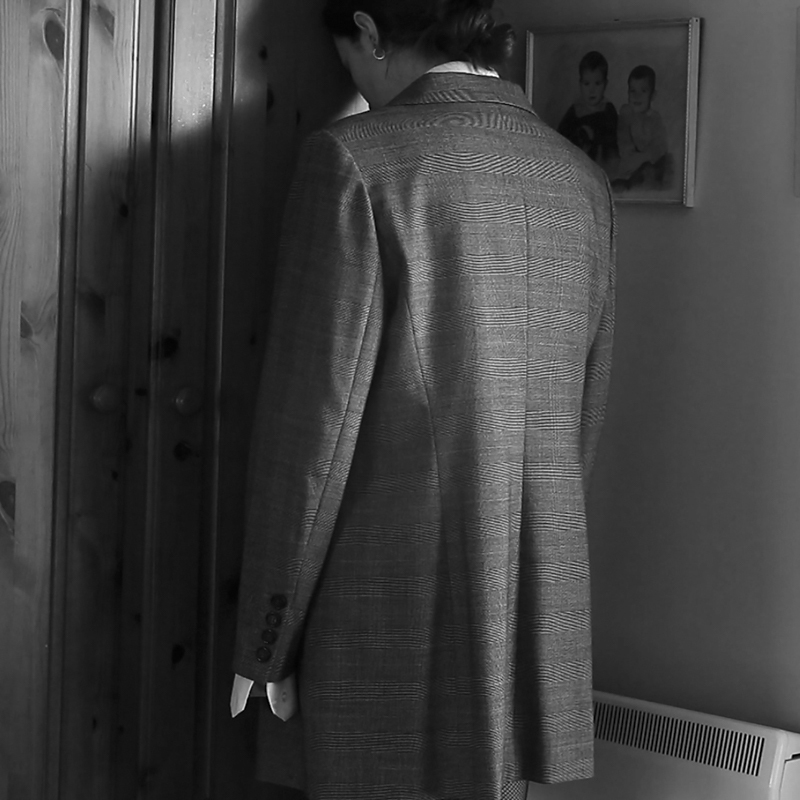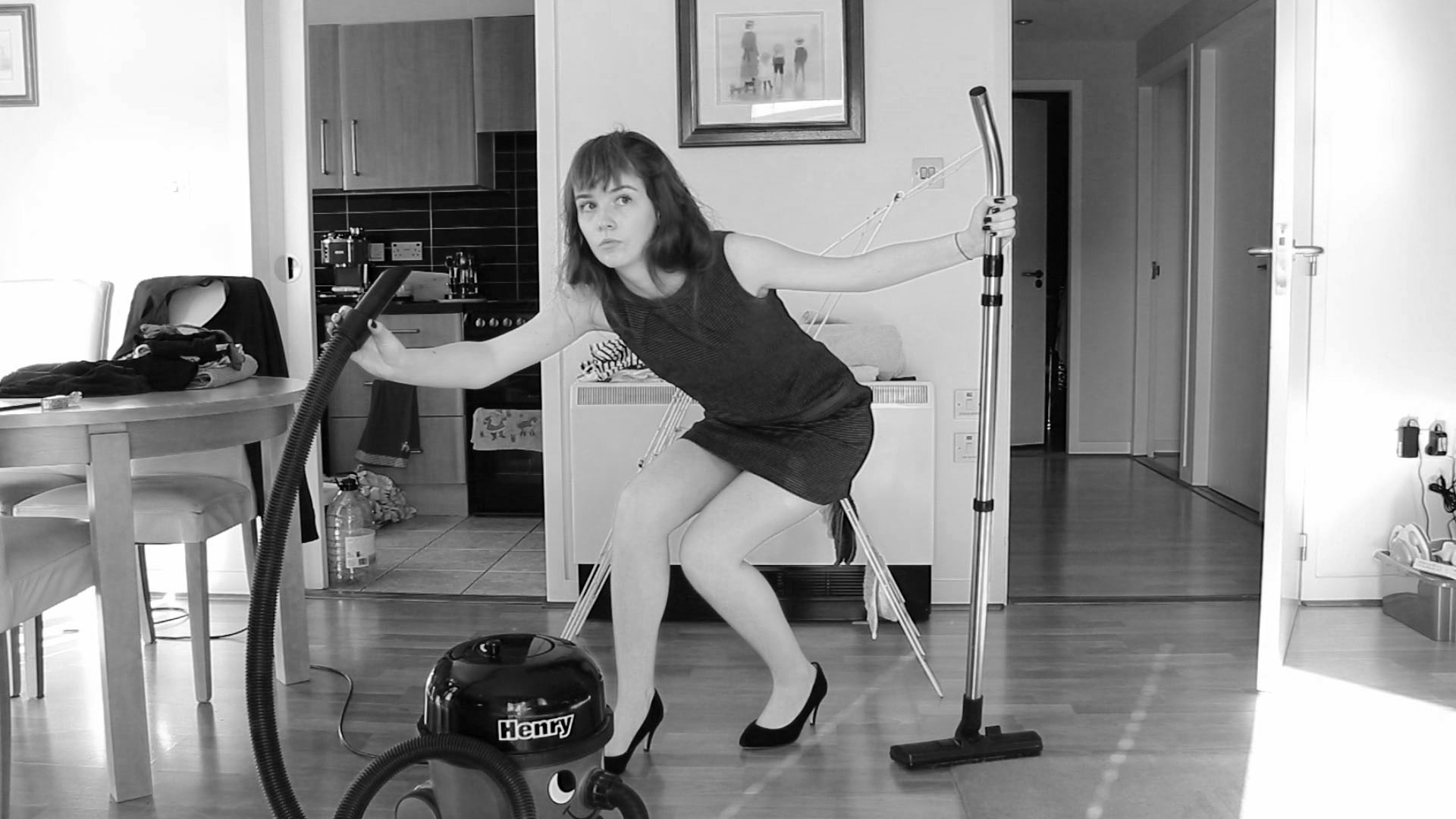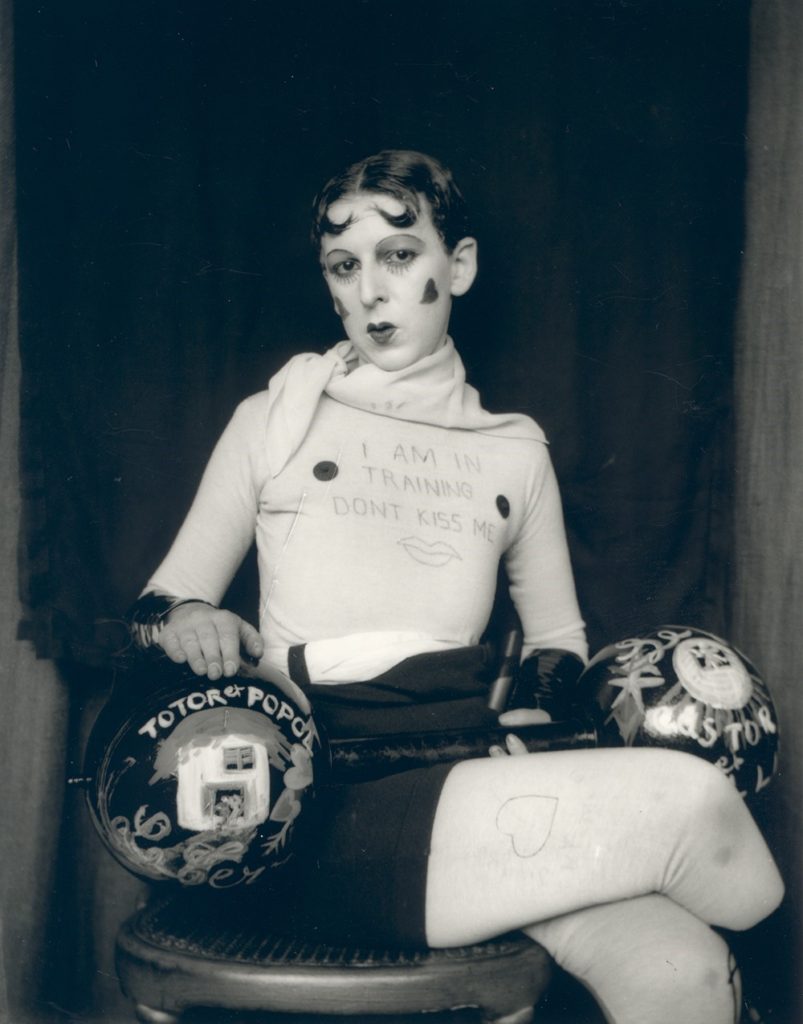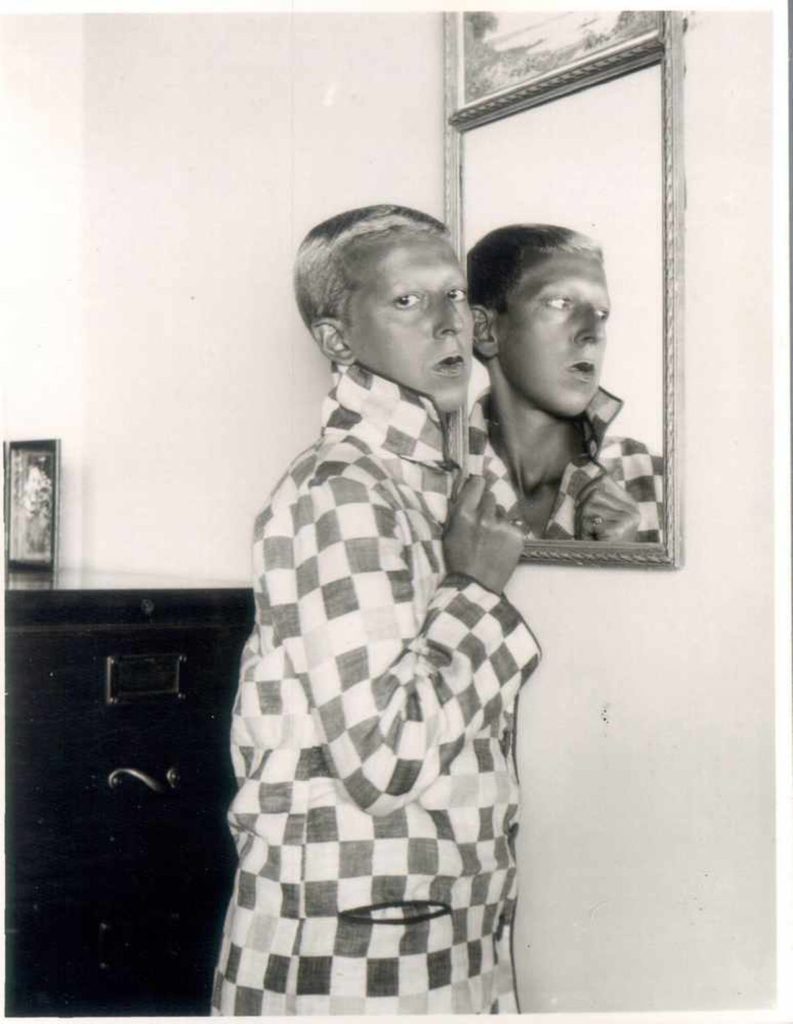In what way can the work of Claude Cahun and Shannon O’Donnell be considered political?
Claude Cahun is a French Photographer, best known for their controversial portraits which helped change the idea of gender as they often wore “masculine” clothing and even shaved their head in a way of rebellion against what society depicts a “women” to be. Cahun was also a writer and sculptor who changed their name from Lucy Renee Mathilde Schwob to Claude Cahun as it was more gender neutral and therefore “neither masculine nor feminine, so there is no good reason to force either of those identities onto them.”. In Cahun’s own words they describe their gender as “Masculine? Feminine? It depends on the situation. Neuter is the only gender that always suits me.”
Shannon O’Donnell is a Jersey born photographer also known for her controversial photography questioning what our society views as “gender” and why. O’Donnell focuses on bringing “to light the inequalities of social standards as well as challenging how we as a society see one another.” She has many short films and photobooks such as her work in “Shrinking Violet” where she shows her mother’s role at home as a women and she questions and almost mocks it as this is what society sees as “women’s expectation”. Her short film “The way the river flows” further questions gender norms and tries to express her feelings towards societies views on “femininity and masculinity”
Both Photographers can fall under the Identity Politics side of the debate. Identity politics focuses on aspects such as race, gender, sexuality class and more; where these topics are discussed. Here both Claude Cahun and Shannon O’Donnell focus on Gender. This can be seen controversial as not everyone agrees with the work that they put out; however, I think they would argue that this is exactly what reaction they want. They want to be outrageous and outspoken in order to get their point across that it is okay if you can not conform to your biological sex and want to explore and break those gender norms that society has put down.
I do see both Claude Cahun and Shannon O’Donnell as political as they are both Role Models in controversial and taboo subjects and furthermore encourage others to follow in their footsteps.

Here I think Shannon O’Donnell’s image clearly shows the politics side of her work as this image of her in a man’s suit which pulls on the gender side of politics as it shows her gender and body dysphoria through the non-traditional feminine clothing which I think helps highlights the struggle that many of us face in meeting the requirements to society’s expectations, as many of us feel the need to fit in and to not get teased to bullied; however O’Donnell works on breaking that barrier by photographing her thoughts and making it public. This is a bold choice as many people might judge her for it, but I think that in this moment in time she aware of the choices she made and got to the stage where Shannon doesn’t care anymore about what others think and instead used her platform to inspire others.
The other side to this image is the Society and Patriarchal side; all our lives women are told what to do and when to do it, and to grow up, find a husband and obey to the traditional housewife lifestyle. This although may not be as serious of an issue in 2020, gender inequality is still a major problem and we still live in a society run by men. And also where if people don’t conform to gender norms we get pushed and punished until we do conform, this has been seen in examples of gay conversion therapy and online negative comments where people tell others that they don’t like the way the other people are dressing. Its crazy how such an image can have so many underlying meanings and be powerful in many peoples struggle in finding their true identity and being comfortable in their own skin. The oppression that women still deal with topics such as gender pay gap, sanitary products being a “luxury” item and abortion among others are all topics that governments (generally run by middle ages white men) decide on which highly impact female lives or lives with uteruses.

Claude Cahun highlights these exact same spots, due to Shannon O’Donnell’s work being vastly inspired by Cahun’s work; however, the main difference being the timescale and century. Cahun had to deal with gender dysphoria and breaking gender norms in World War 2, where most peoples views where unheard and seen as being irrelevant as Nazi Germany began their take over and only saw Hitler’s opinion as the important opinion. Here society expectation where even higher as Hitler believed that the supreme race were blonde, blue eyed, strong non-Jewish soldiers; which made many people terrified to express a simple opinion never mind a whole battle on cross dressing and gender neutrality.
Claude Cahun (CC) began taking photos in the early 1912 and continued taking self portraits up until 1930s. In 1937 CC settled in Jersey following the occupation in France and Germany. Later on Cahun and Marbelle (CC’s stepsister) “became active as propagandists. Fervently against war, the two worked extensively in producing anti-German fliers. Many were snippets from English-to-German translations of BBC reports on the Nazis’ crimes and insolence, which were pasted together to create rhythmic poems and harsh criticism. The couple then dressed up and attended many German military events in Jersey, strategically placing them in soldier’s pockets, on their chairs, etc.”
Additionally, CC can be seen as political for again the same reasons of breaking the gender barriers and this started by her shaving her head, they wrote that when people couldn’t tell what gender CC was, it brought them joy.
To conclude, Cross dressing, which both Claude Cahun and Shannon O’Donnell explore, isn’t just about annoying elders and making people angry but rather about finding creative ways to express ones selves and show off our personality and style. When we find a way to dress that lets us feel comfortable and confident it brings a new light in our lives and allows us to live more freely, we become happier as we are proud of what we put on our bodies and stop caring about what others may or may not think. Cahun and O’Donnell I think pair together well to help give everyone confidence in not compiling to what others and society want us to and to instead do what we want which I think is incredibly important and the fact that they could express their thoughts and feelings through the medium of photography and film I think was very courageous but exceedingly important.
Sources and Research:
https://shannonodonnell14.wordpress.com/type/video/
https://shannonodonnell14.wordpress.com/2018/02/12/fake-it-til-you-make-it/
https://usw-mezzanine.co.uk/shannon-odonnell/
https://www.makingqueerhistory.com/articles/2019/9/1/claude-cahun-part-ii
https://en.wikipedia.org/wiki/Claude_Cahun



Overall a very good essay that makes relevant references to gender issues and identity politics. Your use of a quotations where appropriate makes your argumentation stronger and provides a critical perspective. Use this method more where relevant to demonstrate wider reading and understanding (especially from a feminist/ art history perspective). Below are a few more points to consider.
Marks: 15/18 = A
1. Use Harvard System of Referencing for quotes and bibliography (we will go through this in class)
2. Consistency in presenting text, eg, use single quotation marks for quotes and italics or double quotation marks for words you wish to emphasize. Only large caps for proper names and no abbreviations (use full name of artist once, thereafter only surname)
3. Captions for each illustration (name of artist, title, year etc.)